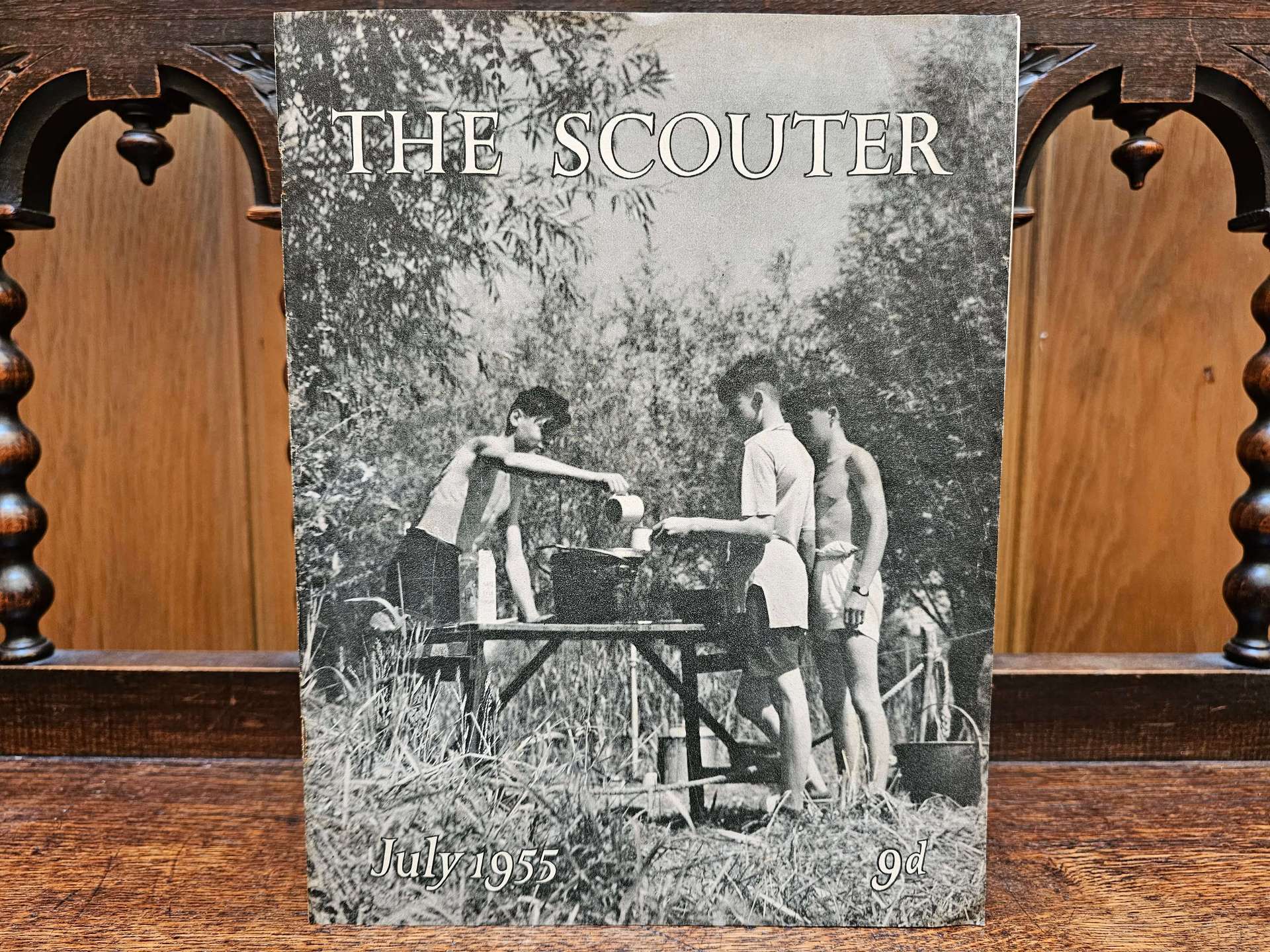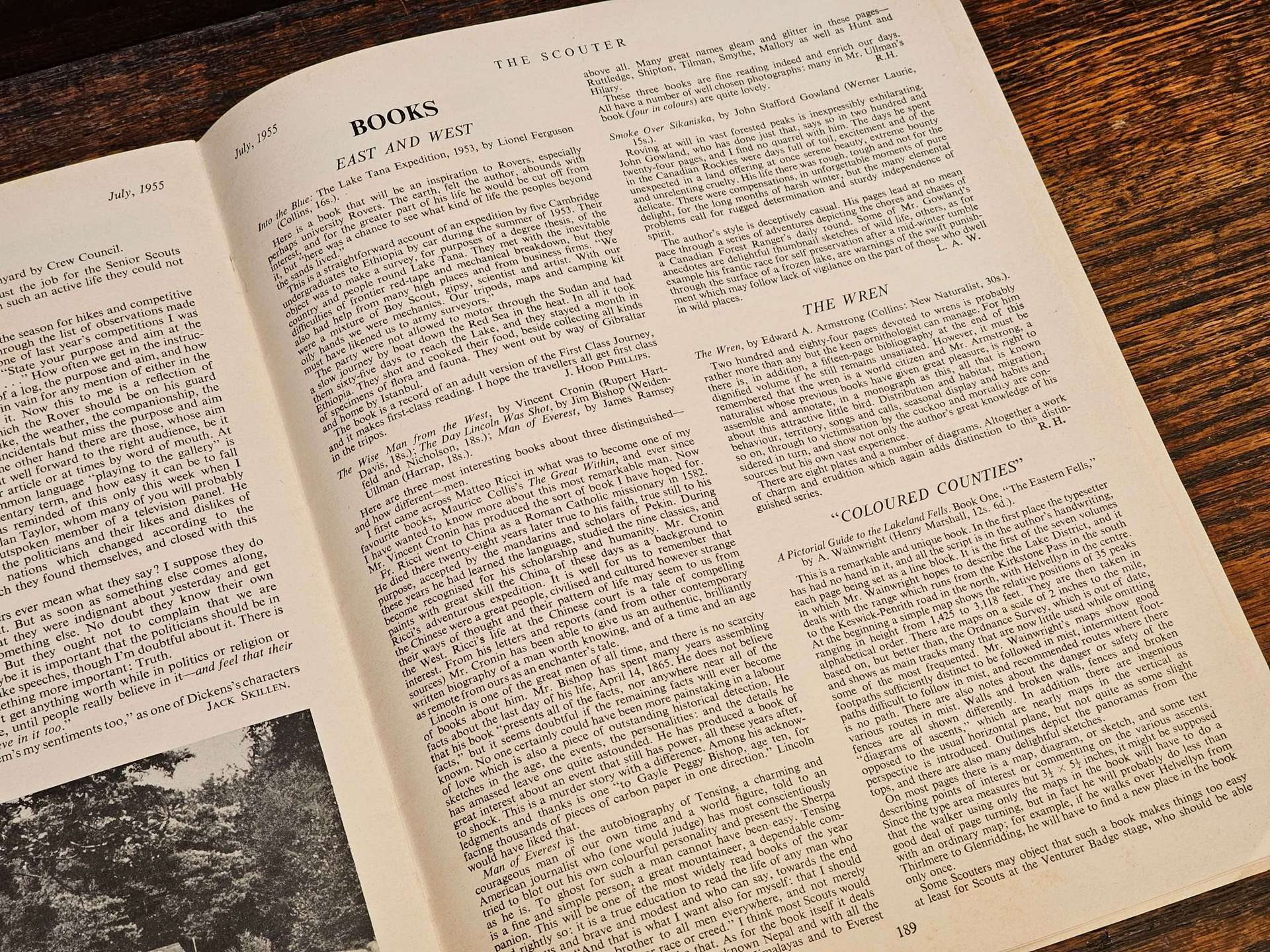The Eastern Fells Book Review
Article by Chris Butterfield
Determining how many reviews exist for Wainwright’s The Eastern Fells is not an easy task. A lengthy book review was found, which was believed to have been written by Wainwright himself. I don’t collect outdoor magazines from the 1950s, so apart from an early write-up in Cumbria magazine back in 1955, I have never read any other reviews.
I was recently sorting through my book collection and came across a spare: The Eastern Fells – First Edition. I gave it a quick flick through and spotted a short passage written in pencil I’d previously overlooked, which read, “Review in Scouter: July 1955, page 189.” I thought this was interesting, so I tracked down a copy. I vaguely heard of this magazine but had never seen one before. The Scouting magazine originated in July 1909 as the Headquarters Gazette. It merged with other periodical publications and had several changes in title, content, format and distribution method. The last issue was published in the autumn of 2020.

Luckily, I found an exceptionally good-condition copy of The Scouter on AbeBooks for less than £3, and it arrived the next day. Reading this fascinating review of The Eastern Fells has encouraged me to seek other outdoor magazines from this period.

“Coloured Counties”
A Pictorial Guide to the Lakeland Fells. Book One, “The Eastern Fells,”
by A. Wainwright (Henry Marshall, 12s 6d).
This is a remarkable and unique book. In the first place, the typesetter has no hand in it, and all the script is in the author’s handwriting, each page being set as a line block. It is the first of seven volumes in which Mr Wainwright hopes to describe the Lake District, and it deals with the range which runs from the Kirkstone Pass in the south to the Keswick-Penrith road in the north, with Helvellyn in the centre. At the beginning, a simple map shows the relative position of 35 peaks ranging in height from 1,425 to 3,118 feet. They are then taken in alphabetical order. There are maps on a scale of 2 inches to the mile, based on, but better than, the Ordnance Survey, which is out of date and shows as main tracks many that are now little used while omitting some of the most frequented.
Mr Wainwright’s maps show good footpaths sufficiently distinct to be followed in mist, intermittent footpaths difficult to follow in mist, and recommended routes where there is no path. There are also notes about the danger or safety of the various routes in mist. Walls and broken walls, fences and broken fences are all shown differently. In addition, there are ingenious “diagrams of ascents,” which are nearly maps in the vertical as opposed to the usual horizontal plane, but not quite as some slight perspective is introduced. Outlines depict the panoramas from the tops, and there are also many delightful sketches.
On most pages, there is a map, diagram, or sketch, and some text describing points of interest or commenting on the various ascents. Since the type area measures but 3 ½ x 5 ½ inches, it might be supposed that the walker using only the maps in the book will have to do a good deal of page turning, but in fact, he will probably do less than with an ordinary map; for example, if he walks over Helvellyn from Thirlmere to Glenrydding, he will have to find a new place in the book only once.
Some Scouters may object that such a book makes things too easy, at least for Scouts at the Venturer Badge stage, who should be able to find their way and identify their panoramas with no more than the ordinary Ordnance Survey map. True, but over most of the country, they will have to, and I am sure that nobody can fail to benefit from contact with the work of such a skilful, original, and devoted cartographer. It is a labour of love, twenty years in the making, written with no thought of financial gain but “carefully and with infinite patience for my own pleasure.” It is a real craftmanship, a rare thing in these days of mass production and perpetual hurry, and a work of art that should delight the possessor as a great painting or piece of music does. T.T Macan.

The review was concise and well-written. The final paragraph was a delight to read. The reviewer’s acknowledgement of the book being a labour of love and a work of art still resonates with many people today. Who would have believed that The Eastern Fells guidebook set a standard that has yet to be equalled almost 70 years later?
Back to top of page

